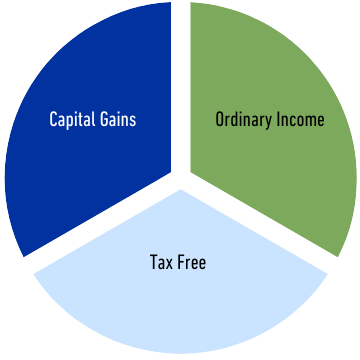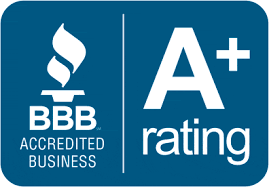
Optimize your tax strategy with Asset Location Planning
Are you seeking ways to enhance your tax efficiency and lower your tax liability risk?
Asset Location Planning (ALP) is a strategic approach designed to place your assets in the most tax-advantageous locations, helping you reduce taxes during the crucial phases of your financial life: accumulation, distribution (income), and wealth transfer.
How Asset Location Planning works

When you liquidate or sell an asset, it can be taxed in 3 ways: as capital gains, ordinary income, or tax-free. Your personalized Asset Location Plan will identify the optimal allocation for each asset, ensuring you benefit from reduced taxes during the accumulation, distribution, and wealth transfer phases.
Asset Location Planning can help you save on taxes when it matters most, giving you more freedom to do what you love!
Asset Allocation vs. Asset Location
VS.
Asset Allocation
This involves diversifying your portfolio across asset classes like stocks, bonds, real estate, and cash to reduce investment risk.

Asset Location
This focuses on placing investments in the most tax-efficient locations to minimize tax liability.

Note: Diversification and rebalancing do not guarantee profits or protect against losses.
Steps to creating an Asset Location Plan
1. Determine the ideal mix of tax-favored benefits
The IRS offers 3 tax-favored benefits: tax deductions on contributions, tax deferral on growth, and tax-free income on distribution. Your personalized plan will help you decide on the most tax-advantageous mix:
- Tax-deductible contributions
- Tax-free income
- Tax-deferred accumulation
2. Invest in the optimal tax quadrants
Capital gains or ordinary income locations
After-tax contributions that are taxable during accumulation and at distribution.
- Stocks
- Bonds
- Mutual funds
- ETFs
Capital gains or ordinary income locations
After-tax contributions that are non-taxable during accumulation and taxable at distribution.
- Business interests
- Real estate
- Annuities (fixed or variable)
Ordinary income location
Pre-tax contributions that are non-taxable during accumulation and taxable at distribution.
- 401(k)
- Pension plans
- Profit-sharing plans
- Tax-sheltered annuities
- SIMPLE IRAs
Tax-free location
After-tax contributions that are non-taxable during accumulation and at distribution.
- Some municipal bonds
- Roth IRAs
- Roth 401(k)s
- 529 qualified plans
- Properly structured cash-value life insurance
3. Tax bracket planning
Evaluate the tax impact of your distributions and strategize to minimize taxes. This involves understanding your tax brackets and planning withdrawals accordingly.
Is an Asset Location Plan right for you?
Consider an Asset Location Plan if:
- You are a high-income earner facing high tax rates.
- You seek more control over your investments.
- You want a worry-free retirement.
- You desire more freedom to enjoy your life and hobbies.
Get started today!
Begin optimizing your investments and reducing your tax liability risk with a personalized Asset Location Plan (ALP). Start investing in the right mix of locations and get back to doing what you love!
